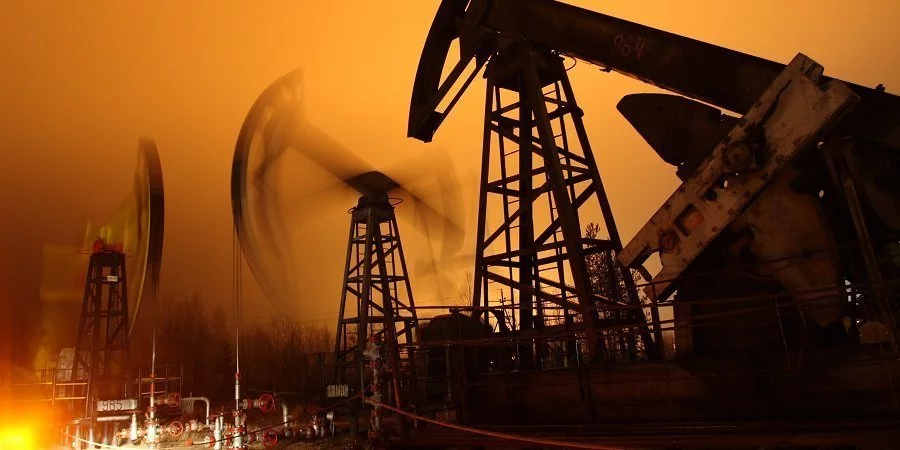- Murat Utemisovich, what are the main issues faced by the Minister of Energy in the Republic of Kazakhstan? Which key tasks does the Ministry address?
- It is necessary to focus on more important areas, whilst preserving all the planned production indicators in the fuel and energy sector achieved in 2019.
Generally, the priorities are clear. During an extended board meeting, which was held on February 25 this year, we reviewed the results of the Ministry of Energy for 2019 and the industry's objectives for 2020. The volume of oil production in 2019 reached a record level in the history of the oil and gas industry – 90.5 million tons. This year's oil production is expected to reach 90 million tons.
In conjunction with the Committee of Geology and Subsurface Use of the Ministry of Ecology, Geology and Natural Resources, JSC "NC "KazMunayGas" and KMG "Engineering" are working to develop a geological exploration program for the period of 2021-2025.
The Government has approved the following Concept of the State program. Dynamics growth on investment projects was also observed in 2019. Above all else, these are such major projects as Tengiz, Kashagan and Karachaganak.
Production from the three major projects was 55.2 million tons (102.2% by 2018 (54 million tons) and 103.2% against the planned target (53.5 million tons). The target for 2020 is 55.7 million tons.
Tengiz future expansion project is also being developed. Currently, over 230 domestic service companies are involved in the development of steel structures and other construction works.
In line with the future expansion project / wellhead pressure management project (PBPUD), Tengizshevroil is planning to increase production by 12 million tons annually.
Kashagan has achieved a stable production of 400 thousand barrels per day, thanks to a major overhaul in 2019 and the transfer of two production wells to the injection well stock. Further production expansion projects are well underway at an active pace.
Kashagan's effective oil volume in 2019 was 14.1 million tons, or 106.8% compared to 2018.
In 2020, the reserves are expected to yield 15.5 million tons of oil and 10 billion m3 of gas.
The efforts are also taken to support the production regiment in the Karachaganak deposit.
In order to maintain production at levels of 10-11 million tons per year, phase 2M production regiment maintenance projects (lift production restrictions on gas, 4th gas injecting compressor) are being implemented. Projects aimed at maintaining the production regiment will enable the production of 18.5 million tons of liquid hydrocarbons by the end of the FPSA period, with total investments of $1,678 million.
After the completion of Phase 2M projects, the Karachaganak Expansion Project (KEP-1) is planned to be implemented to further support liquefied hydrocarbons production. For this purpose, it will be necessary to install 2 new gas injection compressors (in 2023 and 2025).
One of the Ministry's top priorities is the development of the gas sector and gasification.
As you are aware, in December 2018, along with the participation of the nation's leader (Yelbasy) the "Saryarka" gas transmission pipeline project was initiated. Today the pipleline is fully operational. It was launched on December 27th,
2019. Developments in the following sectors will be resumed.
The petrochemical industry is expected to undergo a lot of work, to meet project requirements such as the production of polypropylene with the capacity of 500 thousand tons per year, worth $1.9 billion and polyethylene with the capacity of 1.25 million tons per year.
In the electric power sector, the volume of electricity generation amounted to 106.0 billion kWh or 99.3% by 2018 (106.8 billion kWh). The plan for 2020 is 105.2 billion kWh. Electricity consumption reached 105.1 billion kWh, or 102% by 2018 (103.2 billion kWh), which indicates a complete coverage of the country's economic needs in electricity.
Renewable energy still remains a top priority. 21 RES facilities were launched last year. The total number of investments attracted into RES projects amounted to 613 million USD.
A lot of effort was put into attracting investments. For this purpose international auctions were conducted. In 2020, the Republic of Kazakhstan is expecting amendments in its legislation pertaining to clauses that involve the use and support of renewable energy sources and electricity.
- It is no secret that the main hydrocarbons production in Kazakhstan is located in the three largest fields: Tengiz, Karachaganak and Kashagan. When these enormous reserves are exhausted, which prospective areas will be targeted by the authority?
- Tengiz field has sufficient reserves to last for 34 years, Kashagan for 147 years and Karachaganak for 44 years. Subject to production rates of 2019 (based on data of the Geological committee of the Ministry of Ecology, Geology and Natural Resources of Kazakhstan on the balance of recoverable reserves by categories as of January 1st, 2019).
The future growth of oil production in the country will be achieved by commissioning offshore fields as well.
In addition, efforts are currently under way to develop proposals that encourage the stimulation of highly high-yield oil and gas fields that are in stages of late development.
Today the Ministry of Ecology, Geology and Natural Resources of the Republic of Kazakhstan jointly with the Ministry of Energy and JSC "NC "KazMunayGas" are developing the "Geological exploration program for 2021-2025". This program will be aimed at conducting regional geological and geophysical research, identifying potential oil and gas prospects, and increasing the degree of exploration of these areas as a basis to attract future private investments.
- The Ministry of energy of Kazakhstan is developing a number of tax incentives for mature fields and fields with hard-to-recover reserves. Please tell us more, about some of the benefits and incentives, as well as the methods of determining the effectiveness of the state support measures in the oil production industry. What are the necessary measures to enhance the development of new hydrocarbon deposits?
- In accordance with the instructions given by the President of Kazakhstan during a meeting dedicated to the development of the oil and gas industry in the country which took place on September 5th, 2019, work is underway to study the issues of further stimulation of high-yield and late stage oil and gas fields.
Ongoing works are being carried out in the following areas:
-
analysis of existing tax regime for subsoil users in Kazakhstan to identify provisions that discourage investments in high-yield and late stage oil and gas fields;
- studying foreign experience in implementing incentive measures to maintain the production plateau in fields of late development by introducing new technologies.
- Does Kazakhstan face any difficulties in fulfilling its obligations under the OPEC+ Agreement? Will you deviate from the plan, given the high level of production at the Kashagan field? What effect do you expect from OPEC+'s decision to exclude condensate from the quota-setting mechanism under the production cut-off agreement?
- Kazakhstan's current obligations under OPEC+ are 1,843 thousand barrels per day until the end of March 2020 (57 thousand barrels less than in November 2018). We expect that Kazakhstan will meet its obligations over the period.
Author:

Zhurebekov Murat Utemisovich
The First Deputy Minister of Energy of the Republic of Kazakhstan



